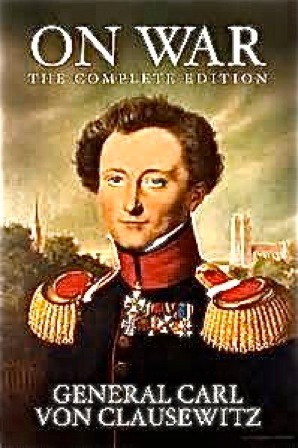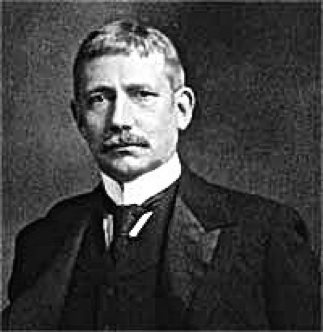The U.S. Army War College
The grade on President Obama’s performance as Commander-in-Chief is F. Unfortunately, the six months remaining on his term of office is too short for even an attempt to improve that rating.
If there were more time, he or some of his trusted advisors could become acquainted with the architect of effective international relations and war.

That architect is Prussian General Carl von Clausewitz who published the definitive book on war in the early 19th Century titled, believe it or not, On War.
The battlefields and weapons have changed drastically since the book was first published, but Clausewitz’s philosophy and principles are as valid today as they were then.
Some familiarity with that philosophy would result in a realization that World War III has engulfed the world for 15 years.
A Commander-in-Chief versed in the Clausewitz philosophy would realize that the United States and every other country in the world is at war with a common enemy. There would be an acknowledgment that the enemy is radical Islamist terrorists who lurk in small battlefields around the world.
Then, hopefully, this snippet of the Clausewitz philosophy would kick in.
Warfare has three main objects:
1. To conquer and destroy the armed power of the enemy;
2. To take possession of his material and other sources of strength, and
3. To gain public opinion.
Under that philosophy, the leader of the coalition fighting the Islamic terrorists would announce to the world, “We will destroy the enemy, his weapons, and infrastructure anywhere we find it.”
In war, national borders and sovereignty virtually disappear. Hitler ran over borders with abandon. The allies responded in kind when they began reclaiming Europe. In practice, there was no border between South and North Korea. The international coalition routinely crossed the Vietnamese/Cambodian border. Today, American missiles and drones are crossing international borders with impunity on a daily basis.
As the current leader of the most aggressive element of the enemy is ISIS in Syria and Iraq, the coalition should undertake the complete annihilation of that organization and all of its personnel, equipment, and infrastructure. This would require a relatively small commitment of armor, personnel, and air power. But no quarter should be given.
The destruction of ISIS would simultaneously eliminate one of the major recruiting tools of terrorist wannabes. Unlike the naive belief that “Remember Gitmo” is a major recruiting tool demanding the closure of that POW compound in Cuba, “Look at how ISIS is establishing the Caliphate” is the actual recruiting poster for Islamic terrorists.
If a successor to ISIS materializes, it should be eliminated in the same manner as ISIS.
Simultaneously, coalition IT sleuths should begin identifying every individual communicating with known terrorist organizations on social media and eliminate them by arrest or assassination with weapons or drones.
Until someone arises to take a leadership role for a coalition with a philosophy and mission based on this sketchy outline, those long lines will have to continue snaking through the battlefields of commercial airports.
This map for a route to defeating the current world’s enemy is based on considerable experience.
I was privileged to be a member of the U.S. Army War College class of 1973. My 236 classmates were senior officers of the Army, Navy, Air Force, Marine Corps, CIA, Foreign Service, National Defense Agency, and other departments. Each of us had security clearances to permit access to highly classified material.
My faculty advisor on one project was Ambassador Herman Eilts, former U.S. Ambassador to Saudi Arabia.

The War College was established in 1903 to, in the words of then Secretary of War Elihu Root, “Not to promote war, but to preserve peace….”
As described by the War College Foundation, “The U.S Army War College educates and develops leaders for service at the strategic level while advancing knowledge in the global application of land power. The College accomplishes this by providing high quality professional military education at the strategic level, aggressively conducting research, publishing, engaging in discourse, wargaming, and conducting strategic leader development. The War College produces the world’s best strategic leaders – educated, strong, and inspired to serve.”
Prior to the War College, you, the taxpayers, paid for my graduate studies in international relations at Georgetown University and the Hague Academy of International Law in Holland, and in the Management Program for Executives at the University of Pittsburgh.
I served for more than a year each in an International and an Army headquarters and in two Corps headquarters.
So I’ve been there and done that. Maybe that is a sliver of experience on which to base a critique of the nation’s foreign policy.
Obviously, the President and his advisors are lost in the fog of war. Their approach to World War III would be much different if they had the privilege of a 30 day crash course at the Army War Colleges or one of its sister institutions.
So here’s the perspective.
Requiring everyone elected President and Vice President of the U.S. to take a crash course at one of the military war colleges before taking the oath of office might produce real leaders in the future.
Let’s try it.
enough





